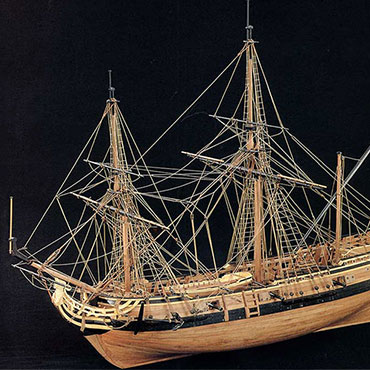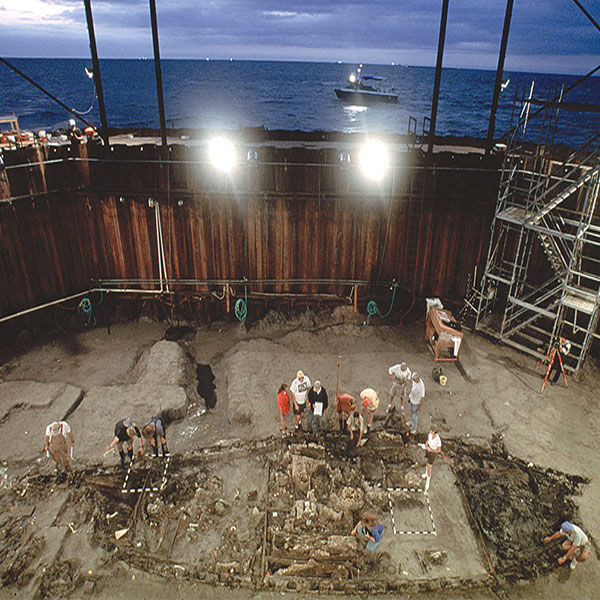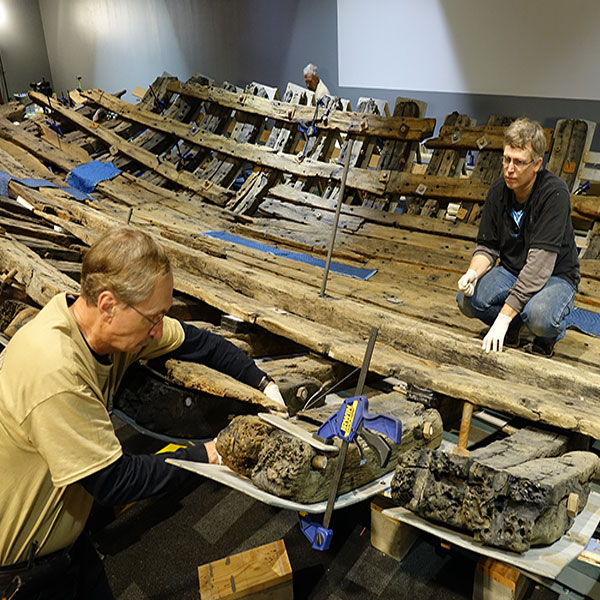Excavation and Preservation
Up from a muddy grave and into a stunning exhibition.
The amazing journey of La Belle began in 1684 with La Salle's departure from France, and continued with the ship's demise two years later. This, however, was only the beginning of the ship's intriguing saga.
A 20-year hunt to find the shipwreck, and the remarkable 1995 discovery of its remains by archaeologists with the Texas Historical Commission, led to one of the most extraordinary engineering feats ever associated with an archaeological excavation.
Unprecedented Excavation
A double-walled cofferdam was built around the sunken ship in 1996, allowing archaeologists to pump water out of the wreck site and excavate La Belle almost as if it were on dry land. After excavation, the hull and much of the cargo were transported to the Conservation Research Laboratory at Texas A&M University’s Riverside Campus in College Station, Texas.
Unparalleled Insight
The cargo recovered from La Belle gives an unparalleled glimpse into the life of 17th century European colonists in North America. More than 1.6 million artifacts were excavated, including the hull of the ship, three bronze cannons, thousands of glass beads, bronze hawk bells, pottery, and the skeleton of a crew member. The crew member's remains were buried at the Texas State Cemetery on February 3, 2004.
Historic Journeys
Riveting film footage tells the story of an excavation that became as historic as the artifact. Though La Belle was hailed as one of the most important shipwrecks in North America, the untested yet successful solution of excavating a ship in dry conditions within a cofferdam was a significant achievement in maritime archaeology. The film details the adventurous journey from discovery and excavation through the 10-plus years of painstaking conservation.
Reassembly and Rest
In October of 2014, La Belle began its final expedition. The remains of the French sailing vessel were reassembled during a seven-month, award-winning exhibition at the Bullock Museum, led by exhibition curator Dr. Jim Bruseth, the archaeologist who directed the original excavation, and Texas A&M conservator Dr. Peter Fix. Now on view, the shipwreck La Belle is the central artifact in the Bullock's Texas History Galleries, and introduces new scholarship on early Texas history.
Banner image courtesy of Texas Historical Commission.
La Belle Excavation Facts
-
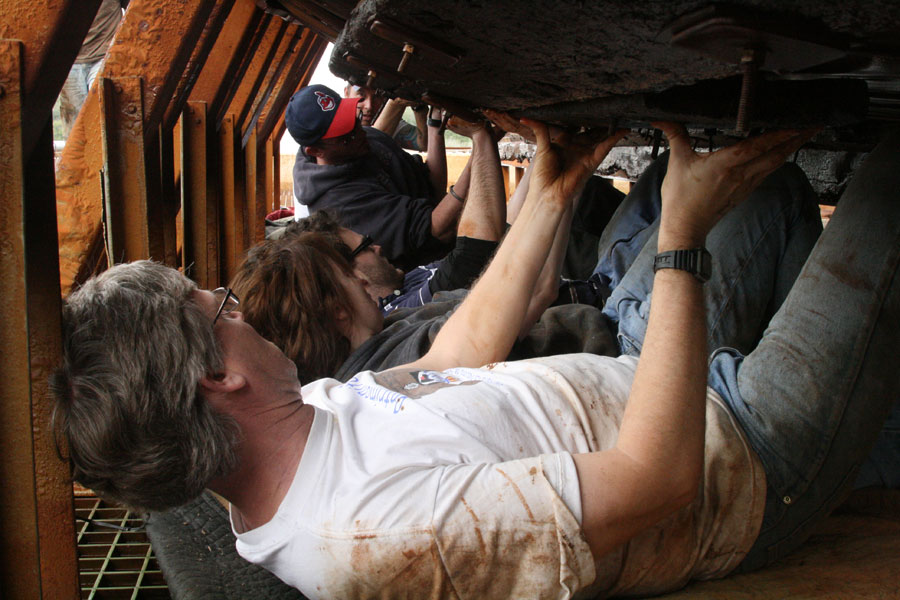 Reassembling La Belle was like putting together a 600-piece timber puzzle. Photo courtesy Texas Historical Commission
Reassembling La Belle was like putting together a 600-piece timber puzzle. Photo courtesy Texas Historical Commission -
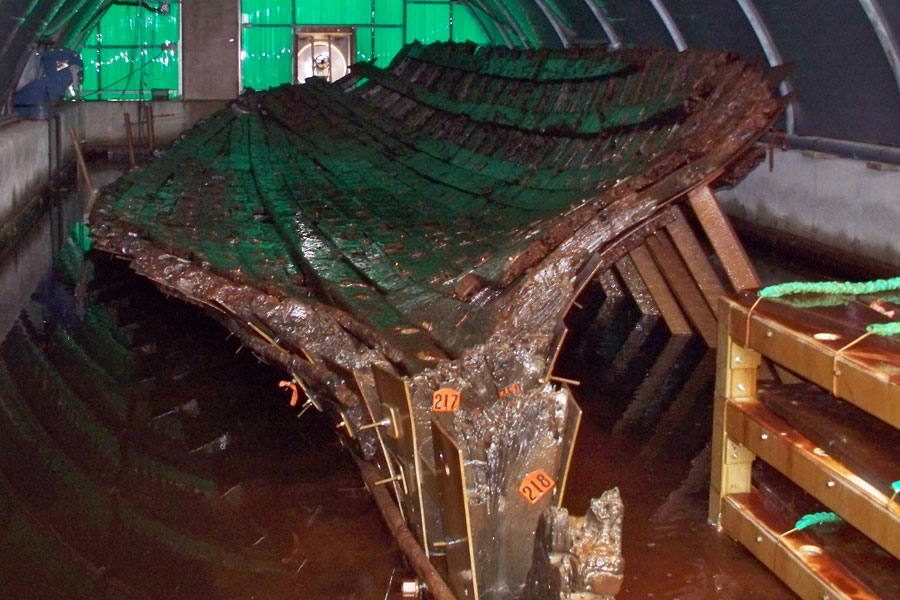 It took two months to remove the hull from Matagorda Bay, two and a half years to clean the timbers, two years to reconstruct the hull at the conservation lab, and two years to freeze-dry the hull. Photo courtesy Texas Historical Commission
It took two months to remove the hull from Matagorda Bay, two and a half years to clean the timbers, two years to reconstruct the hull at the conservation lab, and two years to freeze-dry the hull. Photo courtesy Texas Historical Commission -
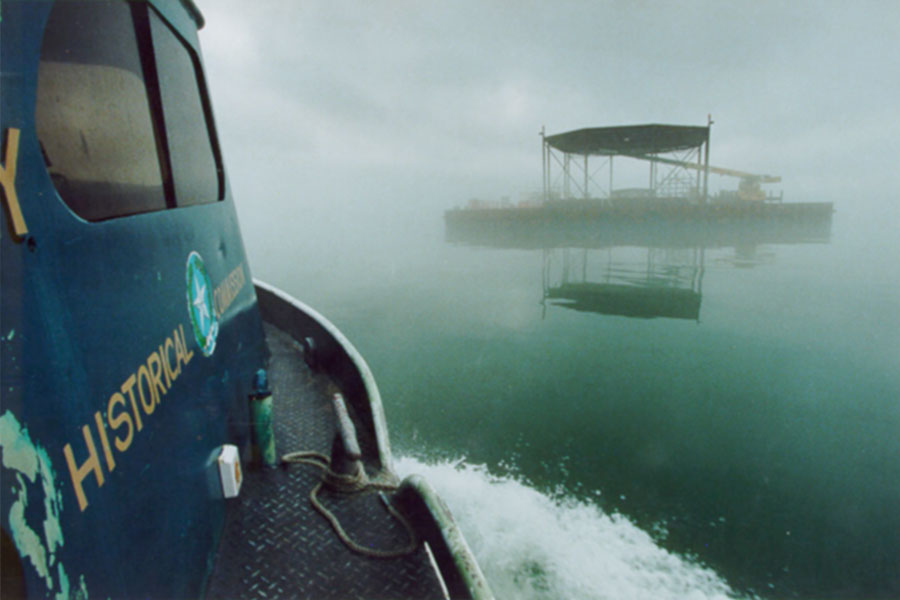 A cofferdam is a temporary enclosure built within a body of water that allows the water in the enclosed area to be pumped out, creating a dry excavation area. The cofferdam around the wreck of La Belle was constructed in Matagorda Bay from May to August, 1996. Photo courtesy Texas Historical Commission
A cofferdam is a temporary enclosure built within a body of water that allows the water in the enclosed area to be pumped out, creating a dry excavation area. The cofferdam around the wreck of La Belle was constructed in Matagorda Bay from May to August, 1996. Photo courtesy Texas Historical Commission -
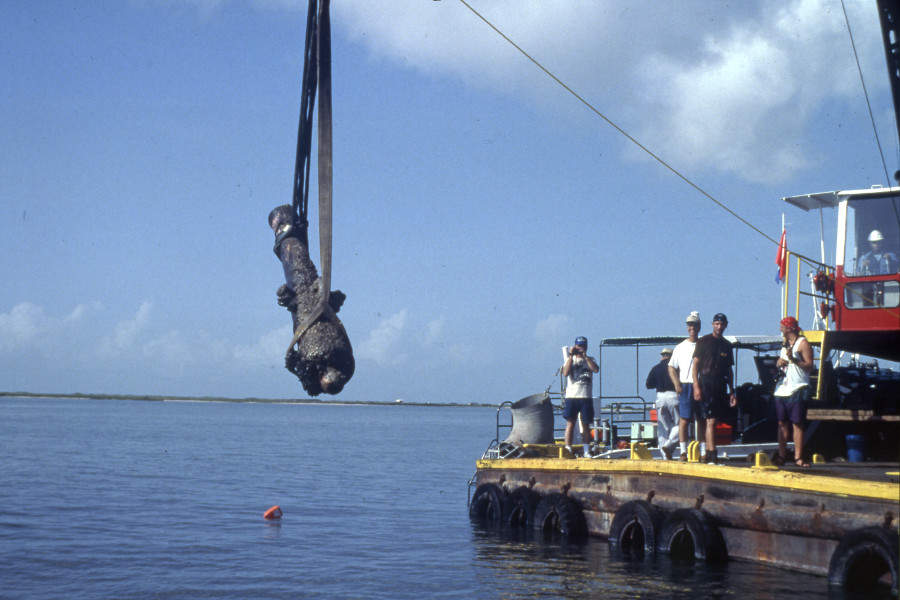 Nearly 1.6 million artifacts were recovered from La Belle in roughly five months. Conservators have spent more than 17 years conserving the artifacts. Photograph by Alan Govenar, Courtesy Documentary Arts, Dallas
Nearly 1.6 million artifacts were recovered from La Belle in roughly five months. Conservators have spent more than 17 years conserving the artifacts. Photograph by Alan Govenar, Courtesy Documentary Arts, Dallas
